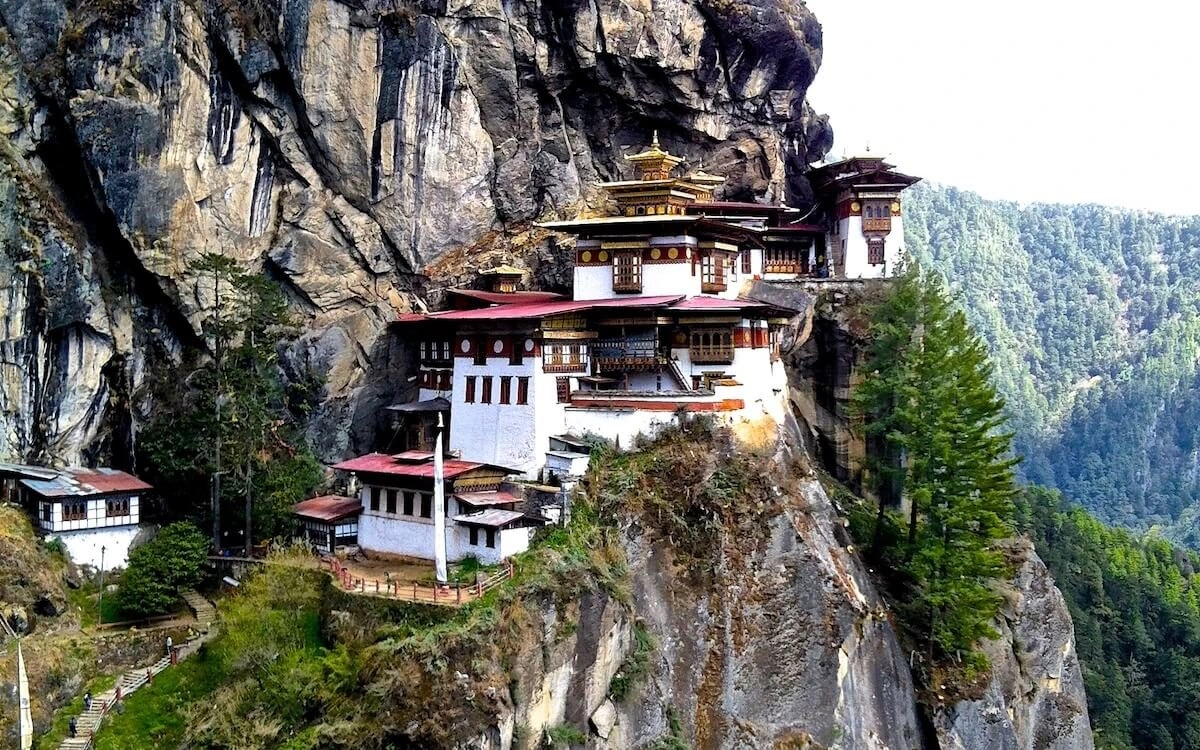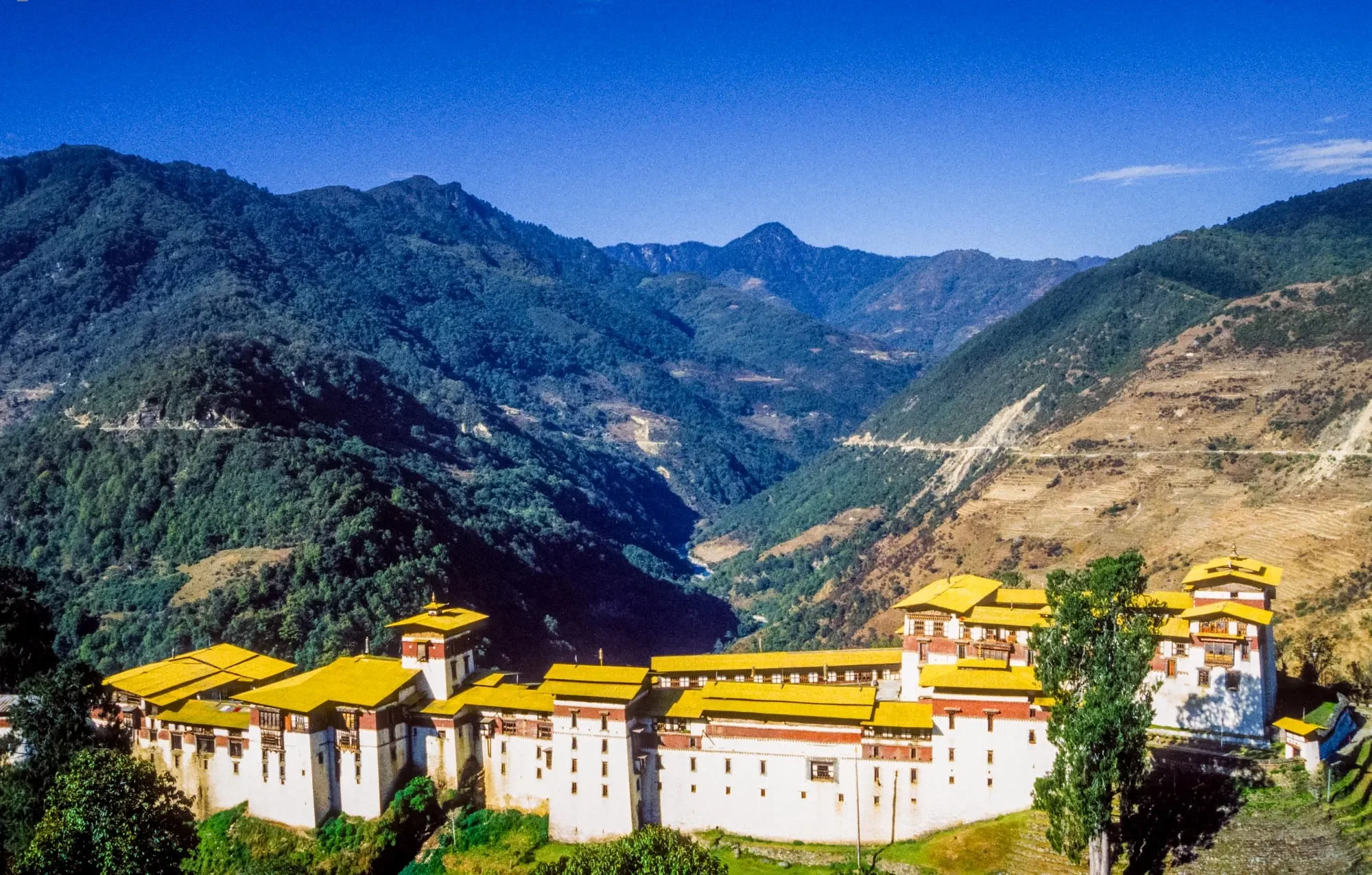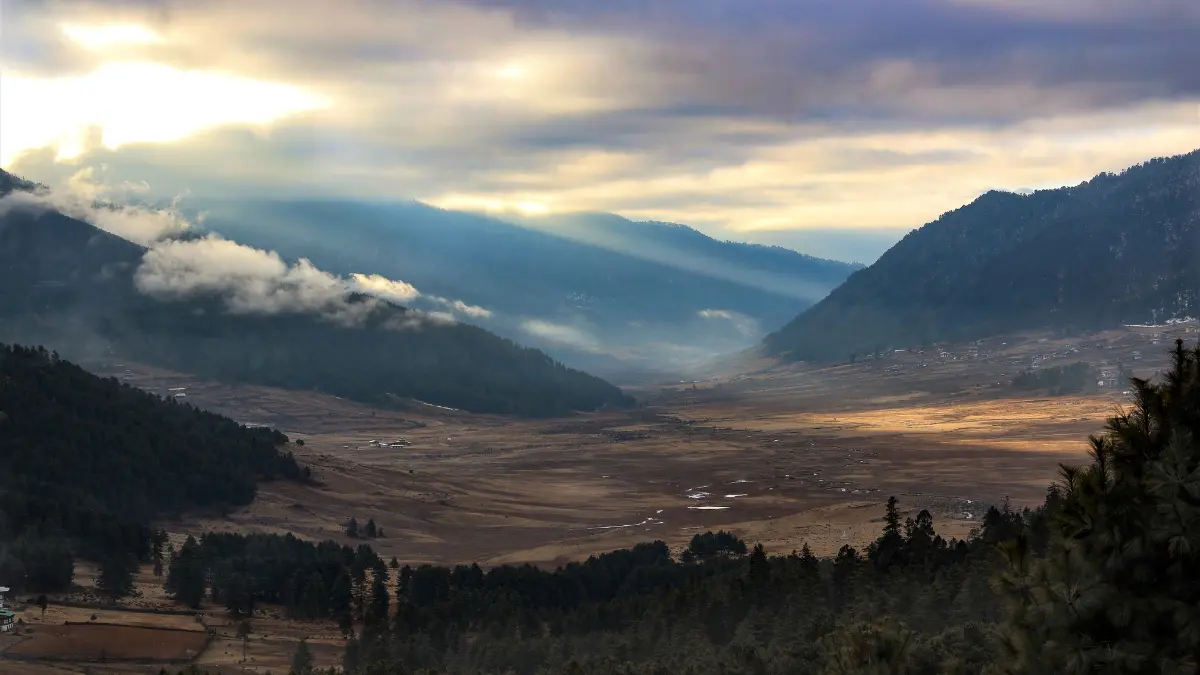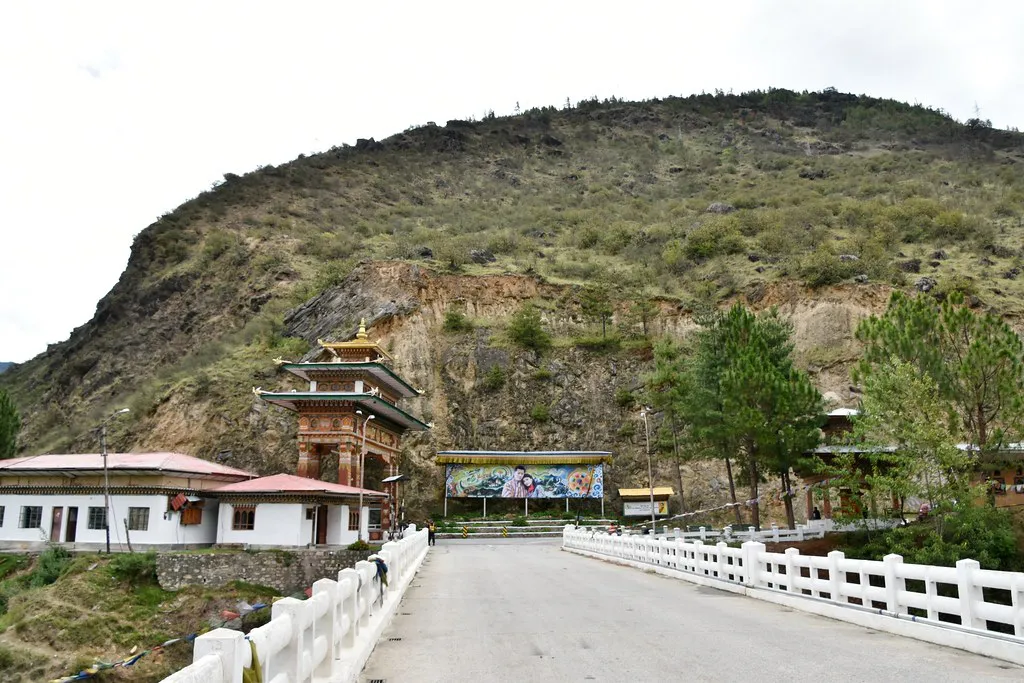Certainly! Here’s a detailed explanation of each heading on places to visit in Bhutan:
Thimphu – The Royal Capital
Thimphu, the capital city of Bhutan, is the heart of Bhutanese culture and traditions. Located in the western-central part of the country along the Raidak River, this city presents a captivating blend of Bhutan’s history, scenic views, and modern amenities. It’s a bustling city where visitors can explore Bhutanese traditions, shop for local goods, and visit the royal palace. With a landscape that ranges from 2,000 to 3,800 meters, Thimphu is also Bhutan’s commercial hub and a starting point for adventures into Bhutan’s deeper cultural treasures. Popular attractions include the Memorial Chorten, Buddha Point, and Tashichho Dzong, the city’s iconic fortress.
Paro – The Last Shangri-La

Paro Valley, often called the “Last Shangri-La,” is known for its stunning scenery, historic monasteries, and cultural significance. Nestled at the convergence of Paro Chhu and Wang Chhu rivers, this enchanting valley boasts iconic sites like the Taktsang Monastery (Tiger’s Nest) perched on a cliffside. Paro is renowned for its scenic rice terraces, red rice cultivation, and traditional villages that add to its picturesque landscape. This valley is also home to numerous sacred sites, including Kyichu Lhakhang, one of Bhutan’s oldest temples, making it a vital destination for history and nature lovers alike.
Punakha Dzong – The Lost Capital of Bhutan
Punakha, once the capital of Bhutan, is famous for its breathtaking Punakha Dzong, known as the “Palace of Great Happiness.” Located where the Pho Chu and Mo Chu rivers meet, this valley enjoys a mild climate and is accessible within a few hours from Thimphu. Known for its warm hospitality, rich Buddhist traditions, and stunning landscapes, Punakha attracts visitors year-round. The area’s beauty, coupled with its tranquil rivers and Punakha Dzong’s architectural grandeur, makes it a must-visit spot for those interested in Bhutan’s religious and cultural heritage.
Trongsa – The Balcony of Bhutan

Nestled atop a hill, Trongsa offers panoramic views that have earned it the name “Balcony of Bhutan.” The town is known for its white-washed traditional buildings surrounded by lush greenery and historical significance. Trongsa Dzong, a fortress with a distinct dragon-like structure, is one of Bhutan’s oldest and largest, built in 1648. This charming town provides breathtaking views of the valleys below and serves as a reminder of Bhutan’s rich history and architectural grandeur. Visitors enjoy exploring the dzong’s detailed carvings, sacred altars, and the peaceful village atmosphere.
Bumthang Valley – Bhutan’s Enchanting Alpine Heart
Bumthang Valley, also known as Jakar Valley, is often called “Little Switzerland” due to its stunning mountain scenery and pristine landscapes. Located in central Bhutan, Bumthang captivates visitors with its emerald-green hills and Swiss cheese production, a unique Bhutanese twist. The valley is home to some of Bhutan’s most sacred temples and monasteries, including Kurje Lhakhang and Tamshing Gompa, making it a spiritual center in the country. Bumthang’s rugged trails also attract adventure seekers, while its serene environment offers a peaceful retreat for nature lovers.
Phobjikha Valley – Land of Black-Necked Cranes

Phobjikha Valley is a glacial valley known for its rich biodiversity, most notably as the winter home of the rare black-necked cranes. The valley is shaped like a bowl and is surrounded by the Black Mountains, giving it a unique and dramatic landscape. This serene valley, with its verdant fields and cultural heritage, offers a perfect escape for nature enthusiasts and bird watchers. Gangtey Monastery, located in this valley, is one of the most revered sites in Bhutan, attracting visitors who wish to experience the valley’s tranquil beauty and cultural richness.
Mount Chomolhari – Bride of the Kangchenjunga
Mount Chomolhari, also known as Jomolhari, is revered as the “Bride of the Kangchenjunga” and is one of Bhutan’s most sacred peaks. Rising to approximately 2,700 meters, this majestic mountain is associated with local legends, believed to be the abode of the protective goddess Jomo. The mountain has a mystical allure, attracting trekkers and adventure enthusiasts from around the world. Although climbing the peak was forbidden for centuries due to local beliefs, it’s now a popular trekking destination where travelers can appreciate Bhutan’s natural beauty and spirituality.
Wangdue Phodrang – Bhutan’s Unification Capital
Wangdue Phodrang, situated at a high elevation, is one of Bhutan’s largest and most culturally significant districts. Known for its lush valleys and stunning subtropical landscapes, this area is recognized for its diversity and beauty. It is famous for the Wangdue Phodrang Dzong, a historic fortress, as well as its vibrant traditional villages like Rinchegang. Expected to gain UNESCO World Heritage status soon, Wangdue Phodrang’s mix of subtropical and snowy climates adds to its appeal for visitors looking to experience Bhutan’s natural and cultural landscapes.
Jigme Dorji National Park – Untamed Wilderness in the Heart of the Himalayas
Jigme Dorji National Park, covering over 4,315 square kilometers, is one of Bhutan’s largest protected areas and a sanctuary for endangered species like the snow leopard, Bengal tiger, and takin. Located across multiple districts, including Gasa, Thimphu, and Paro, this park is a haven for trekkers and wildlife enthusiasts. It is home to more than 30 animal species, 300 bird species, and several rare plants, making it a biodiversity hotspot. Visitors can also explore several cultural sites within the park, including monasteries and historical ruins, which add to its appeal.
Phuentsholing – The Gateway to Bhutan

Phuentsholing, a border town adjacent to the Indian town of Jaigaon, is the gateway into Bhutan and offers a unique introduction to Bhutanese culture. Its proximity to India makes it an important entry point for travelers. Phuentsholing provides a fascinating blend of Bhutanese and Indian influences, making it a vibrant town with plenty of shops, markets, and traditional sites. The town serves as an initial destination for many visitors, offering a glimpse into Bhutan’s unique identity and heritage.

